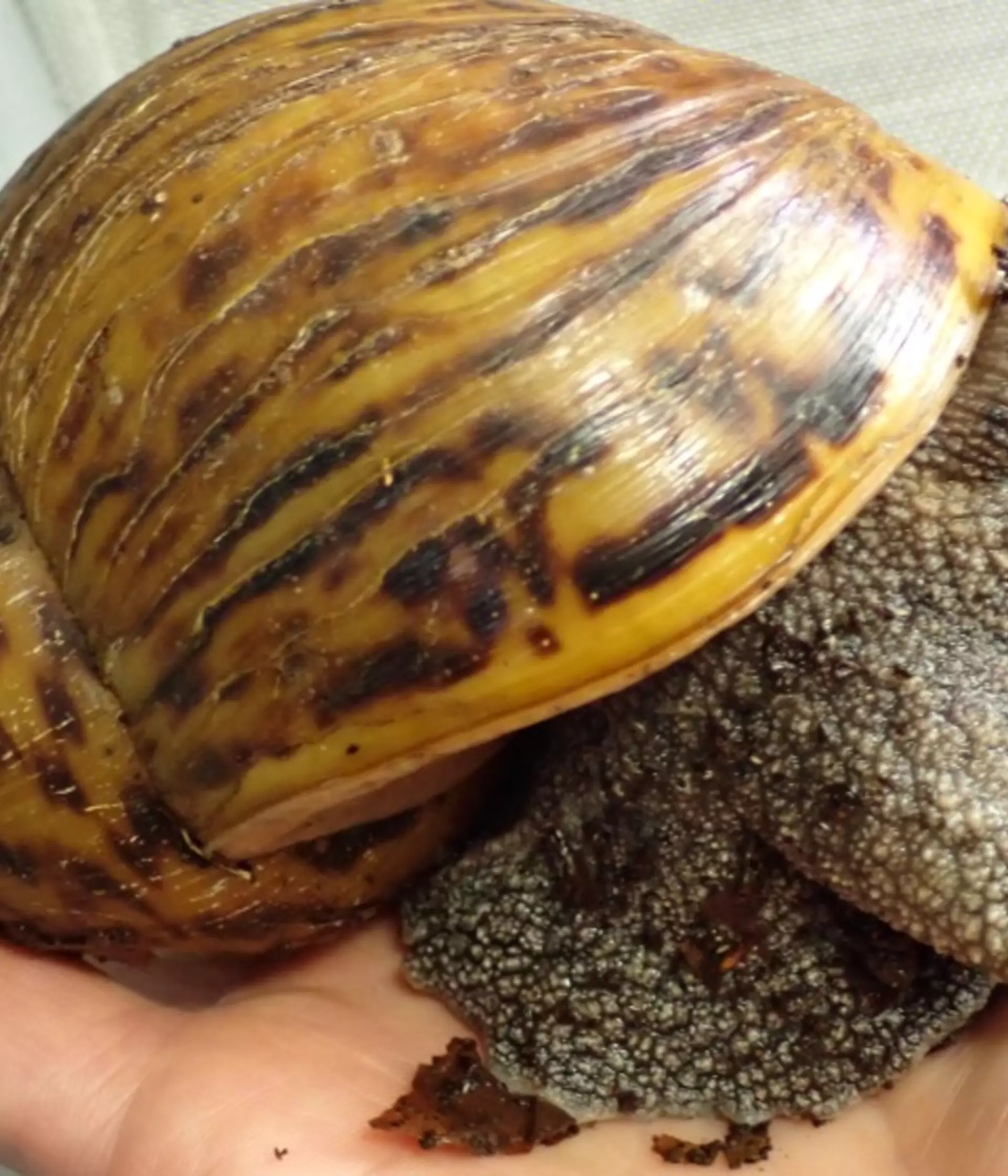The giant African land snail is one of the largest land snails in the world, with a shell growing to over 20cm long, and reaching nearly a kilo in weight. Giant African land snails can are an invasive animal in the wrong ecosystem, and have pushed partula snails to the brink of extinction. They can be bad news for people too, as invasive African land snails can eat farmer crops and spread plant diseases. Like all snails, they are hermaphrodites and have both male and female reproductive organs. This can make them particularly difficult to deal with as an invasive species, because every snail can produce 1200 eggs a year.
Gastropods (snails and slugs) are one of the most diverse groups of animals on earth – there are around 80,000 species (more than all the vertebrates put together!)
What do African land snails eat?
African land snails eat plant matter but also occasionally dead animal remains and egg shells. They can even eat stones, sand, bones and concrete in order to get calcium for their shell. This makes helps make their shells especially tough, as they can blow out car tyres and turn into projectiles when they encounter lawnmower blades.
Giant African land snail lifespan
Giant African land snail lifespan of about 5-7 years.
Meet the molluscs making their way back into the wild
Zoo conservation goes big for tiny snails
Since 1994 we’ve been co-ordinating the conservation breeding programme for 25 species of partula snail in 16 zoos worldwide.
